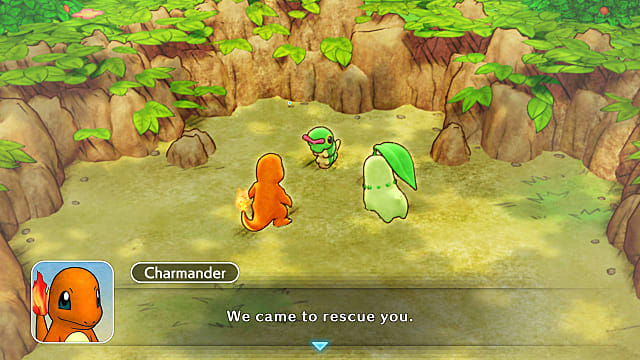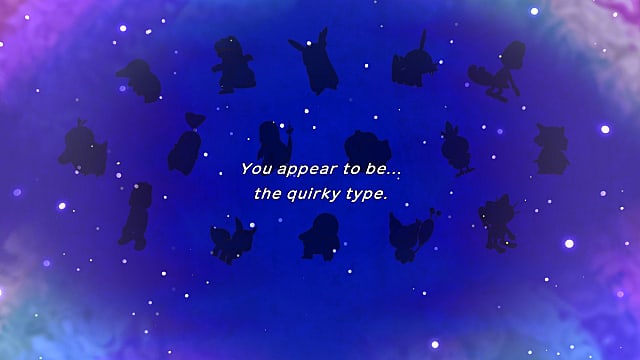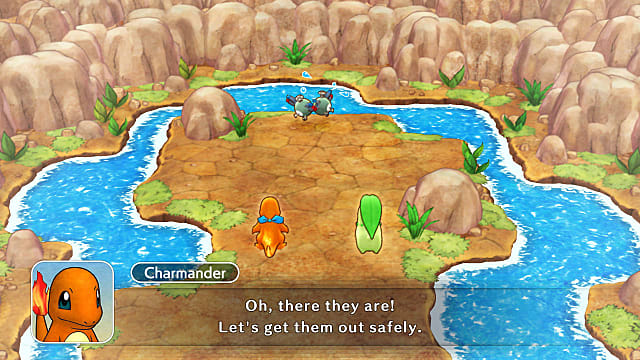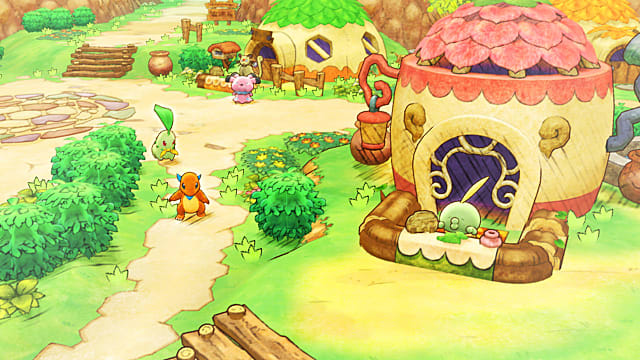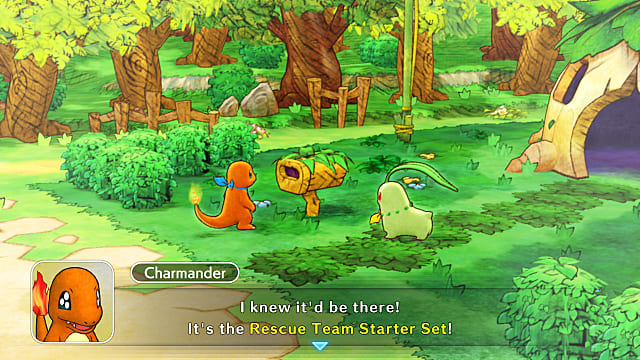You start, as always, by answering a series of questions determining your personality. Based on those answers, you get a pool of Pokemon to choose from, then a partner to pick as well. The first thing you’ll notice is how much of a 1-to-1 remake this is because the available Pokemon only extend through Gen III (Ruby and Sapphire).
That’s not inherently a problem; these designs are all strong on their own and live happily among the ranks of fan favorites. But apart from the fact that I’d love roaming the dungeons as a Wooloo or somesuch, it doesn’t help the game feel fresh. Maybe it’s a finger in the eye to the Nat Dexers? Who knows.
Who knew these things were so accurate!?
The Mystery Dungeon series has always been one of those series that performs better with fans than critics, but even still, there’s no denying later entries introduced more in terms of mechanics and playable Pokemon. That issue is worsened by the most baffling part of the demo: there’s not much indication of what makes this “DX.”
The missions, dialogue, locations, even the soundtrack — all are practically identical to the original releases. Presumably, the DX part of the name is just a reference to including both versions’ Pokemon in one game, but we’ll have to wait until March 6 to know for sure.
For some, though, not changing much won’t be an issue. We’ve said it before, but Pokemon Mystery Dungeon’s biggest appeal is the brand — living as a Pokemon, helping Pokemon, and making friends with other Pokemon. It all plays out against a roguelike/roguelite background, with enough Mystery Dungeon elements to be interesting without breaking your spirit like Shirin or even the Chocobo’s Mystery Dungeon games will.
Traps are fewer and further between, hunger is easily sated with the plethora of food items you have, and (mercifully) your partner’s AI is vastly improved. In fact, nine times out of 10, you don’t necessarily have to fight; Rescue Team DX definitely seems easier than the original releases, at least thus far.
When you do fight, you’ll notice some changes in movesets as well, with moves from Gen IV and later added in. There’s greater variety in your available moves, which goes a long way in keeping things interesting during your dungeon crawling. That’s good, because you’ll be revisiting the same dungeons a lot for sidequests.
The other tweak you’ll notice immediately is the art style. Gone is the pixel art of the original Red and Blue Rescue Team games. It’s replaced with a fantastic storybook-style aesthetic. I’m a big fan of the 2D- and pixel-art of the older Pokemon games, but this change is most definitely not a bad thing. In fact, it’s completely gorgeous.
The animations in cutscenes are almost like they’re out of a pop-up book, and the brighter colors plus better-realized models in your home and hub-town add exponentially to the feeling of coziness you get from being a Pokemon. Unfortunately, though the dungeons receive the same visual upgrades, they remain as barren as before in terms of overall design.
“Cozy” is probably a good way to describe Pokemon Mystery Dungeon: Rescue Team DX at this point. It doesn’t seem challenging enough to satisfy Mystery Dungeon fans, and there’s not enough variation in dungeon design to keep things interesting for really long play sessions. It’s good for short bursts, though, completing a few sidequests and generally just chillin’ as your favorite (older) ‘mon.
Those happy, dewy eyes, though…
The biggest question left unanswered is “why?”. Even though one could argue it makes the games easier to access than leaving them on the Wii U Virtual Console — often a good argument for ports — it still doesn’t explain why this particular set of games.
If you couldn’t tell already, I’m pretty divided about Pokemon Mystery Dungeon: Rescue Team DX so far. There’s not enough new content to really justify a remake — that we’ve seen in the demo, at least. At the same time, the game looks like it’s shaping up as true to form for the series a faithful recreation of fan-favorites that still seems to struggle with its identity.
